

This magnificent national park in eastern Utah has the greatest
concentration of arches in the world. Arches are not common anywhere, and
even in Utah one could hike and explore for weeks and never find a single
one. But in this amazing place, there is one spot in the Windows section
of the park where you can stand and see 11 arches! The world's longest
arch is here, the incredible Landscape Arch; and the world's most famous arch is
here, the Delicate Arch. Both of them are extremely fragile -- nothing
will or can be done to preserve them from their eventual collapse; it is the
park's policy to let nature take its course, so when they go, they will just
go. See them while you can!!
South Window and
North Window, sometimes called the
Spectacles
These are the first large arches that you see after
driving into the park, and like most arches, they are much more impressive when
you have hiked up inside them and can better appreciate their massive
size. Most just view them from a distance, or worse, from a car window,
even though the hike up to them is really easy. Even fewer take the time
to go around to the back side shown here, which is by far the most attractive
view, as can be seen from the second picture below, which shows the front.
This was early one winter morning when it was so cold I could hardly press the
camera shutter with my frozen fingers.

This is the view that most people have from the parking area,
and you can see why these arches are called the Spectacles here. Late in
the evening when everybody is gone and it's getting dark, it can be decidedly
spooky to feel these great empty eyes behind that giant bulbous nose staring at
you across a desert plain.
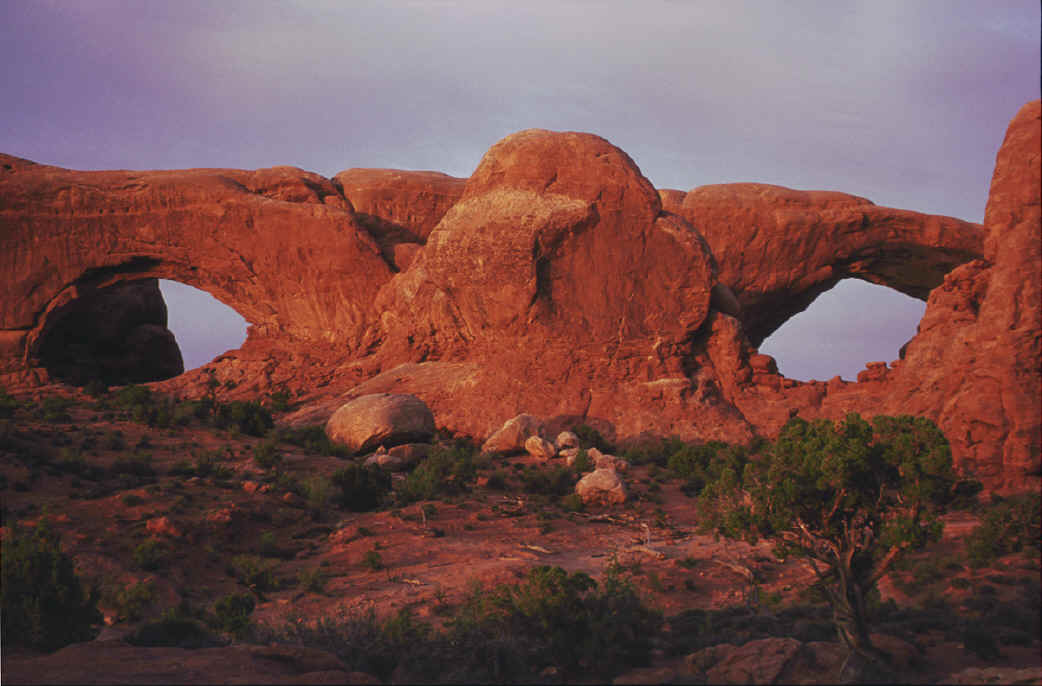
These are the famous Double
Arches, the largest double arches in
the world by far. The North and South Windows, which are close by, were
created independently as two separate arches and so are not considered a true
double, like these are.

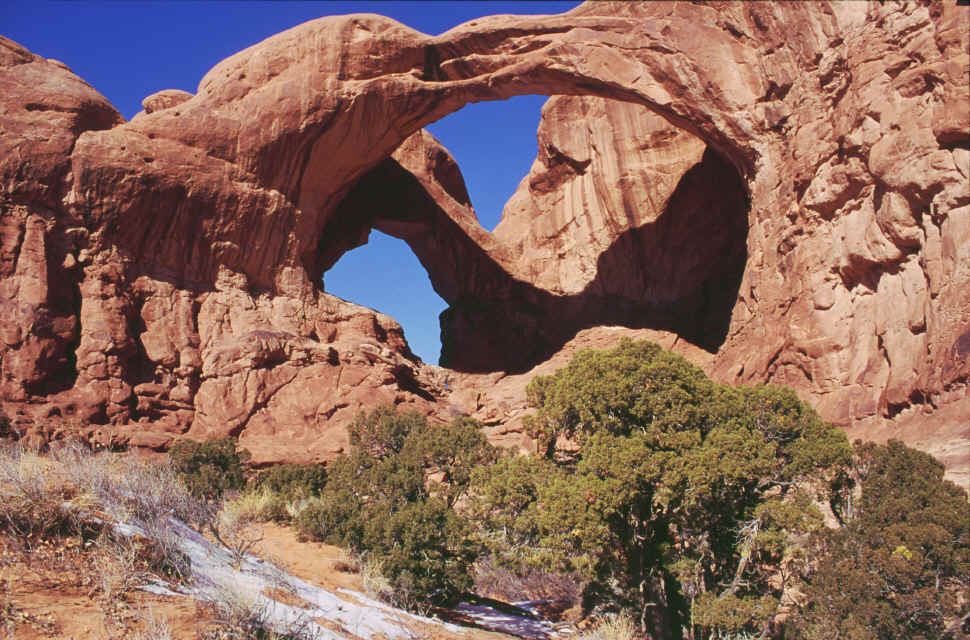
Directly across from the North and South Windows is the pretty Turret
Arch, so named because of the rock tower to the
left.
It has a small opening to the left of the main opening, not visible here, so it
is technically a double arch too.
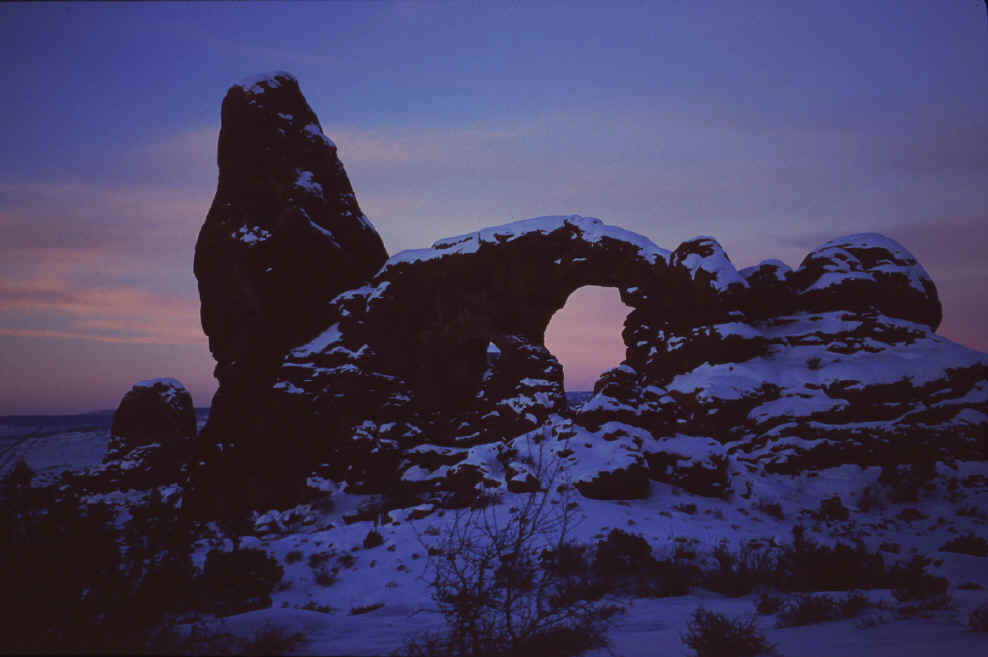
This is the backside of the Turret Arch, showing the small
opening, which is now on the right. The South Window is visible in the
distance.
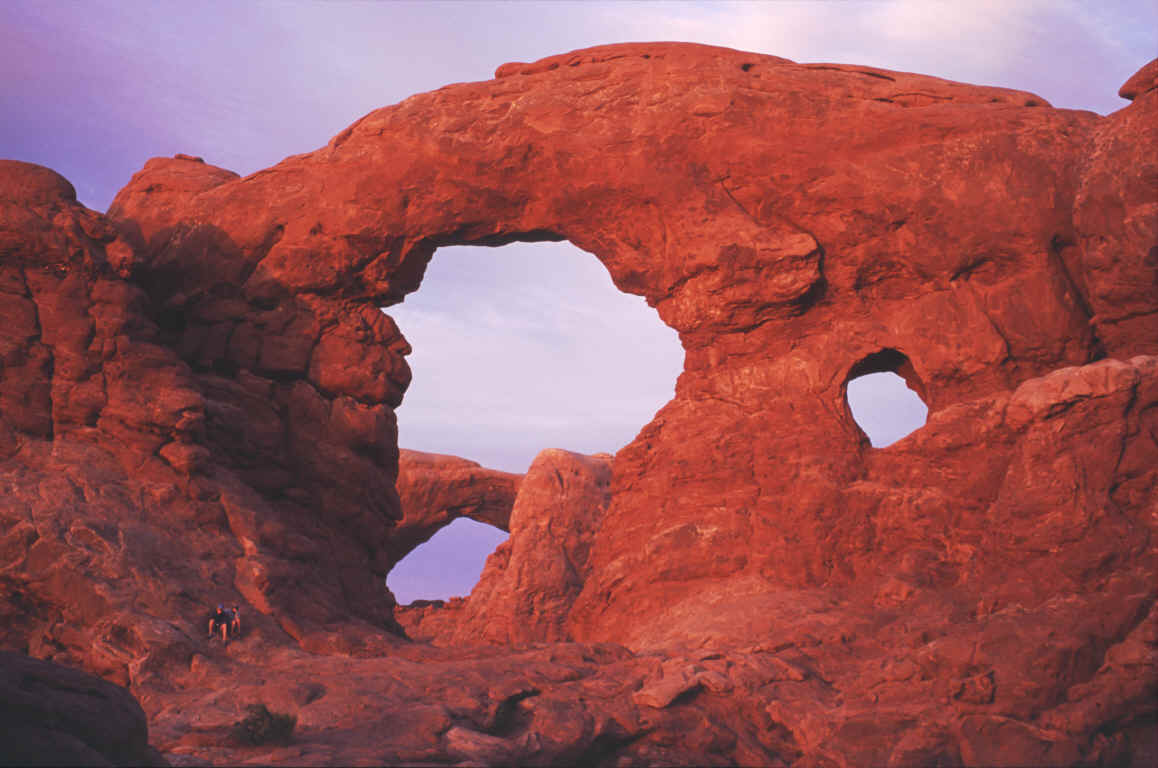
Looking through the North Window to the Turret Arch:
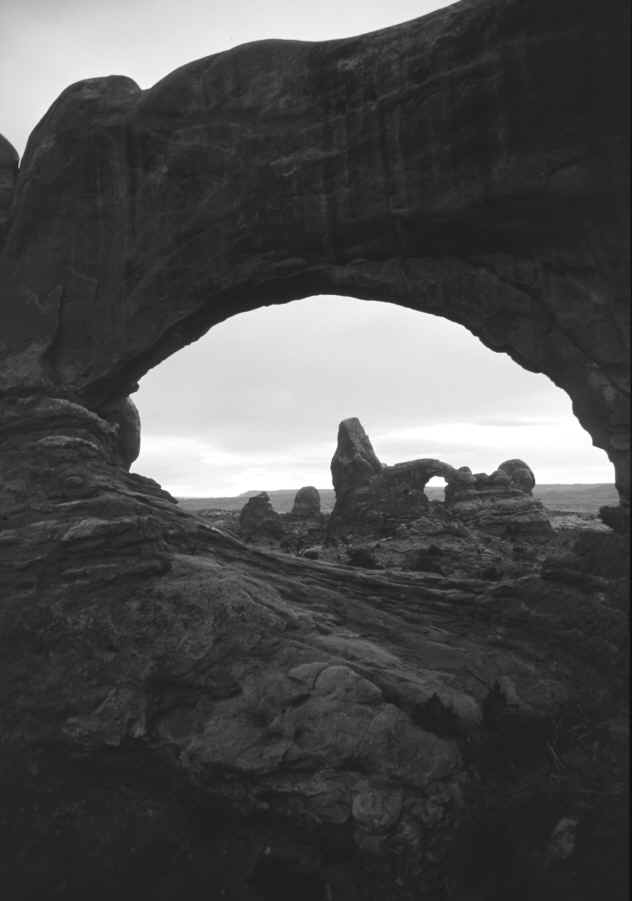
Delicate Arch
Surely the most famous arch in the world, this is one
of the great symbols of the American West, and has been seen in countless
advertisements and commercials. It is even pictured on the Utah license
plates. It really does slant downhill, I wasn't just taking a crooked
picture! It is very aptly named... no one can guess how long that left leg
will last, but it is certainly near the end of its beautiful life. You
don't just drive up to this one (fortunately) -- it requires some effort, a long
uphill hike, and you better take some water. You'd think there would be no
problem getting to an arch that can get hundreds of visitors every day, but no,
I managed to take a wrong turn somehow on my first trip up, and found myself
clinging to the side of some giant slickrock bowl of death, trying to hang on to
my tripod with one hand while inching along on my bottom till I got to flatter
ground. But obviously I made it, or you wouldn't be seeing this picture.
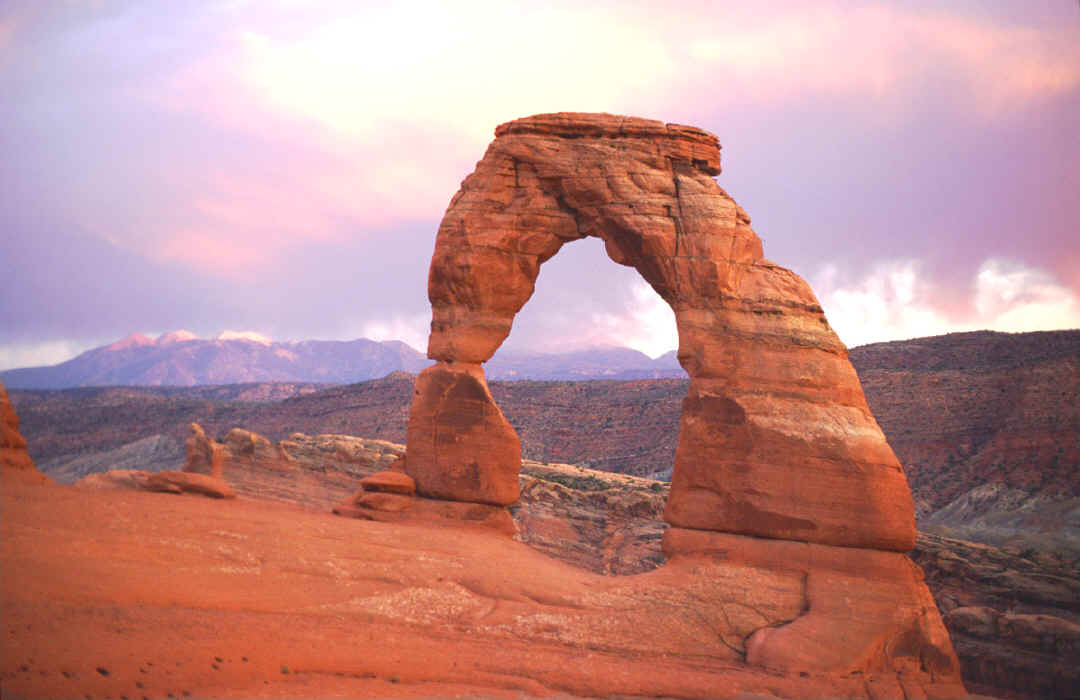
The rarely seen, elusive
Ribbon Arch is on the backside of Elephant Butte,
which also contains the Double Arches. It took me three attempts to find
it, and then I lost it again and couldn't find it on my fourth try. The
name is certainly appropriate and it is dangerously fragile, though there are
stories of one of its first discoverers doing a handstand on top of it. 
The Double O Arch --
it doesn't show up well here, but there is a small opening right below the large
one. This is the most distant of the park's famous arches, the end of the
trail for most visitors; actually most never get this far. I had never
made the hike to it before, and for some reason chose to do it the first time in
the snow, which was scary and dumb, because part of the way you're walking on
top of a rock "fin", one of the long narrow ridges like you see here
beyond the arch. Then when I got there finally, I realized I didn't have
any film for my camera, so I had to come clear back to the truck to get some,
then make the hike again.
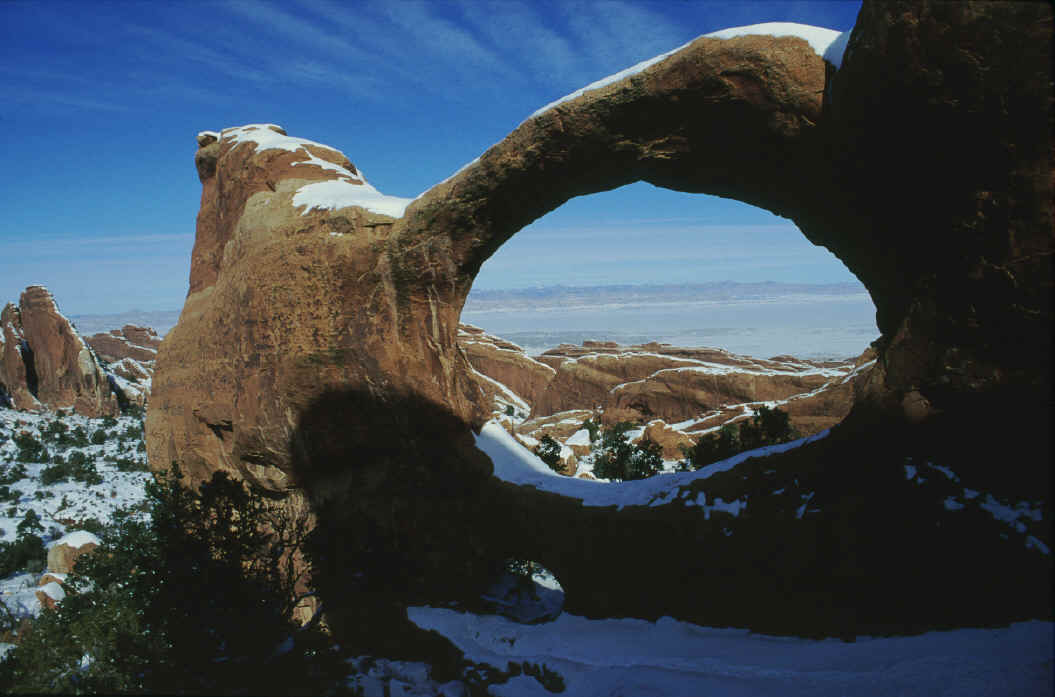
I'm standing inside the bottom arch of the
Double O here... it's bigger than you would think from looking at the above
picture.
This will give a better idea of the size of the Double
O: 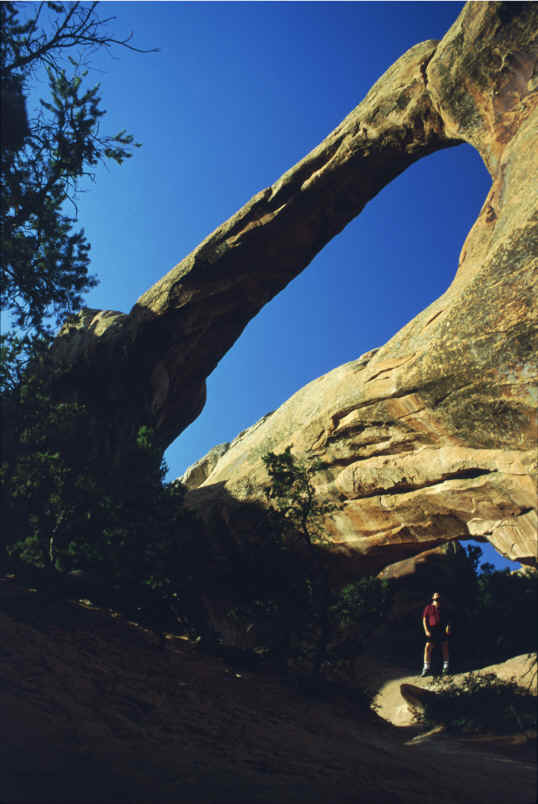

The
Broken Arch is easily visible from the park road,
though the walk out to it is deceptively farther than it looks. Also, it
isn't broken! It just looks like it might be.
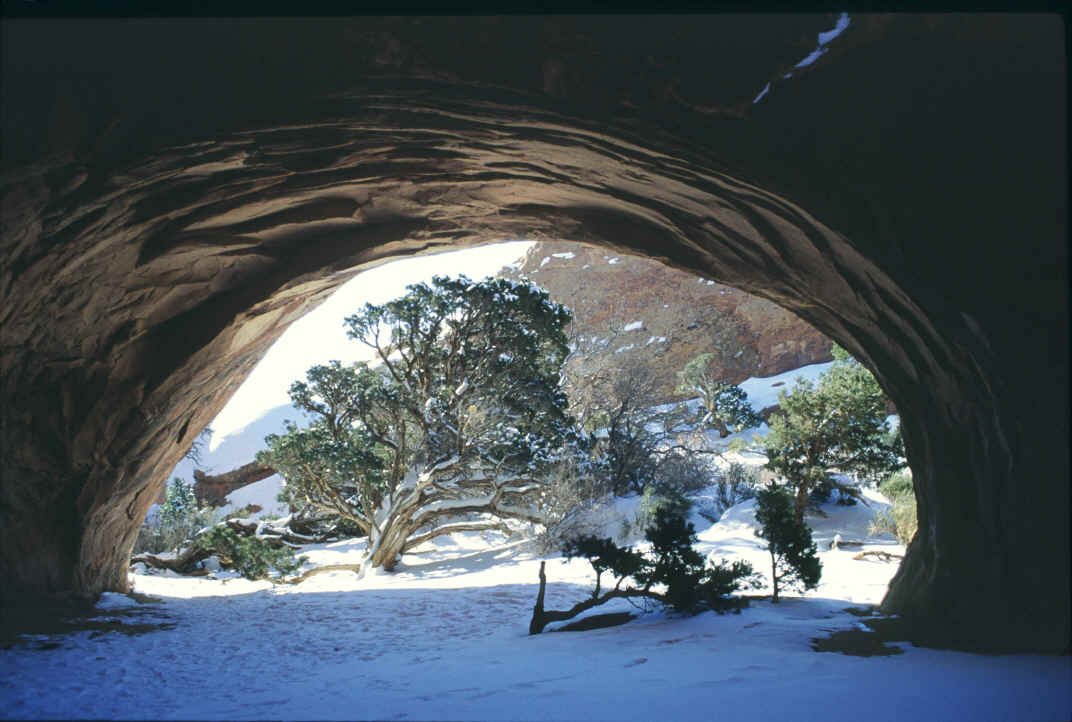
Navajo Arch:
This small arch is so incredibly
stable that almost no rockfall is visible below it, and the ground is
practically smooth, as opposed to many younger arches which are cluttered with
many jagged fallen boulders.
The Wall Arch
Rest in Peace
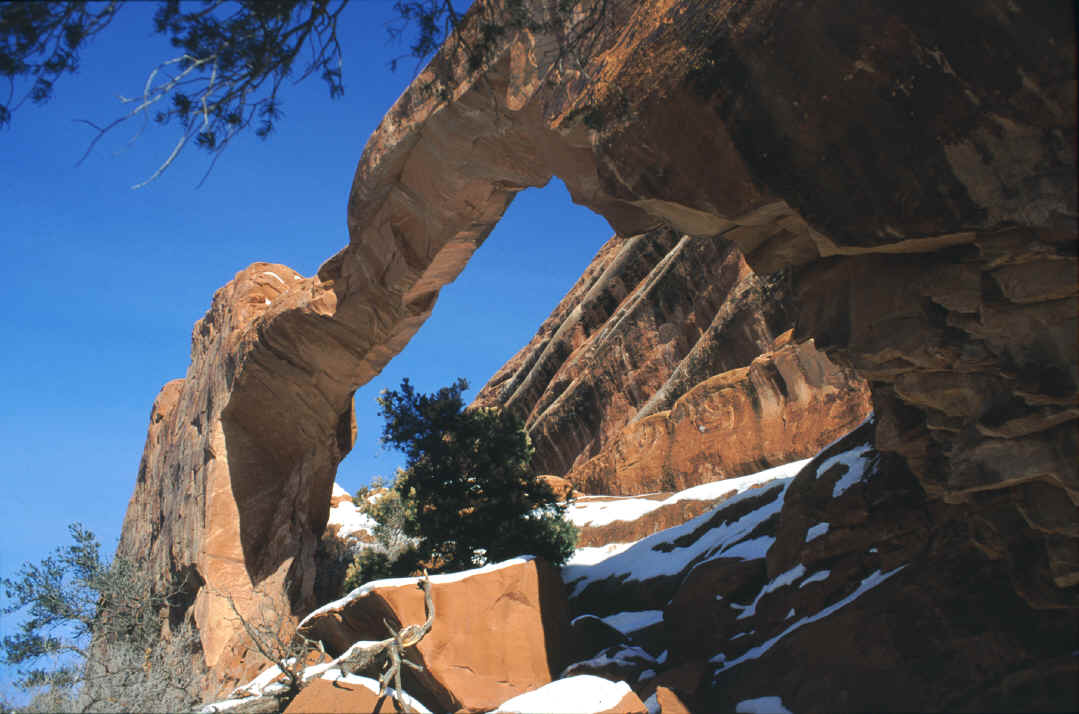
The beautiful Wall Arch
in Arches National Park. It fell during the night of Aug.4 - Aug.5, 2008. No one observed the
fall. It was ranked 12th in size among the park's arches. The
opening underneath the span was 71 feet wide by 33½ feet high. While not
one of the most famous arches in the park, it was seen up close by practically
all visitors going to visit the giant Landscape Arch, being situated right
beside a nearby trail. Nobody predicted it would be the first of the
park's arches to fall in human history, compared to the seemingly much more
fragile Landscape Arch, Delicate Arch, or Broken Arch.
Beautiful work of Nature, we loved you and we miss you! Nature has now
finished the work it began so long ago.